Some initial reactions to the latest issue of TJKC, which turns the spotlight on the 1975-1978 era at Marvel.
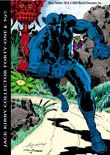
Front cover is a Black Panther piece, newly inked by Dick Giordano. Backcover is Devil Dinosaur as inked by Mark Schultz. Both are briefly interviewed inside (both the artists, not both characters…), and the full page original pencils of each piece are also shown. Both were fairly faithfully inked, but I kind of wonder how it would have looked if the colouring was done straight over the pencils.
The frontispiece is the unused splash page to the story that was published as FF #108, which I guess is newly discovered since they did the big reconstruction back in TJKC #9. Kind of amazing what seems to turn up all these years later, and I can’t help but wonder if any of the other missing bits of that issue have turned up.
A promo article for the new edition of KIRBY UNLEASHED follows, with some background on how the new edition came together. Still need to pick up my copy of that.
Mark Evanier’s regular article follows. Always interesting, in paticular this time talking about how Kirby worked in the “Marvel Method” in the 1960s. Some nice art, including the original art for the FANTASY MASTERPIECES cover that Kirby inked (although, as noted, miscredited to Frank Giacoia here. Another odd caption error a few pages earlier where they call the cover to JUNGLE ACTION #18 unused, which makes me wonder if they had an unused version and slipped in the wrong one, or just got it wrong).
Next article is about the upcoming GALACTIC BOUNTY HUNTERS, using some Kirby presentation and concept art. I’ll take a look at the book when it comes out, but frankly I’ve got at best mixed feelings about this.
Some fascinating bits found on original art of the 1970s. The final issue of MACHINE MAN had the title changed, with the paste-up covering the original name and Kirby’s introductory caption. And for some reason, on the brilliant double page splash of DEVIL DINOSAUR #4 Kirby wrote the script on a separate sheet. I wish they’d printed that double-page splash bigger, though.
Next article deals with some contracts between Kirby and Marvel, which isn’t that interesting to me. Also some anecdotes about the horrible treatment of original art in the 1970s Marvel warehouse.
Can’t say I agree with the next article, which argues Kirby should have put in more Marvel Universe ties in this 1970s work. While I can understand the desire for that on a fannish level, and even agree that it might have boosted sales on the books, I have two main objections. One, that Kirby clearly didn’t want to do it, for good reasons, and forcing that is never a good idea. Second, that would have only invited even greater editorial interference given Marvel at the time. I can only imagine that the books would have been full of “corrected” faces and dialogue. That said, I do like the FF vs. Eternals sketch, and the look at the pencils to the altered Eternals vs. Robot Hulk cover.
The first Gallery section features pencils for a dozen covers that Kirby did for other editors during that era. I always find those fascinating, especially given the minor changes made on many of them before printing, mostly on some faces and costume details. Even though he was working from layouts by others on these they look nice. I especially like the cover they, for whatever reason, got him to do for the “Krang” reprint. Giant monster, fleeing crowd, you can go home again.
Never really understood the “Kirby as a Genre” feature. I always think that every image in TJKC should be by Jack Kirby unless there’s a good reason, and this doesn’t qualify. And I’m kind of bummed they printed in the centerfold, which I think should be used for a large repro of a two-page spread or an extra large single page at close to illustrated size.
Next article looks at those awful 1966 Marvel “cartoons” which swiped panels from the comics. Some interesting stuff, but no actual Kirby art or involvement.
Next gallery looks at some of the villains from the Kirby written and drawn books of the era, with pencils from some covers and interior pages and short articles. Some interesting stuff, and nice to see Ten-For covered, but come on, no Arnim Zola? And nothing from DEVIL DINOSAUR?
2004 Kirby tribute panel follows, with Evanier, Royer, Steve Rude, Dave Gibbons, Walt Simonson and Paul Ryan. Some interesting anecdotes about Kirby and about discovering his work in different eras. Most interesting art included is from the cover to CAPTAIN AMERICA #101, where it was found that under the sanitized Red Skull face was a real Red Skull face by Kirby/Shores, many times better than the published version. Also, I know I had that objecting to non-Kirby in TJKC rule above, but Steve Rude drawing Modok and Joe Sinnott drawing some scene of Doom taking over Galactus’ powers. Cool.
Next up is a real curiousity. TJKC always gets highest points from me when it includes unpublished Kirby story pages. Well, here they have three pages that appear to be pencils from an unused Hulk story from 1962, found in Larry Lieber’s closet. Best guess seems to be that they’re from an abandoned story direction in HULK #3 (or possibly HULK #6). Wherever they’re from, it seems clear that there were probably more, since it opens on “page 11” with the Hulk in a hospital, which no published pages logically lead up to. Pretty funny sequence, with I guess, Rick Jones getting hustled on the basketball court by toughs disguised as teen-agers, and using his mental link with the Hulk (which he only had in #3 and #4, hence the speculation it was meant for #3) to take care of them. That’s playing fair, Rick, calling in the Hulk to take care of a basketball hustling ring. I don’t know what Cap saw in that boy. Anyway, the very one-sided ensuing battle includes the Hulk slam-dunking a guy, which is neat.
Rather maddeningly, the article isn’t clear on if what was found was actual original art or photostats (kind of hope they’re stats, since they seem to have been ripped in half at some point). Hopefully in the near future someone will be able to interview Lieber about what he remembers about these, and maybe show them to his big brother to see if they jog any memories.
Two more pieces of pencil art, more Eternals vs Robot Hulk action and a quiet page from the Surfer graphic novel.
Great issue. Next one up promises Dingbats, Soul Love and a Murphy Anderson inked (and not just the heads) Jimmy Olsen cover.


![Fantastic Four #99 [1970]](http://kirbymuseum.org/blogs/kirby/wp-content/uploads/sites/8/2005/01/Fantastic-Four-99-1970-696x1024.jpg)
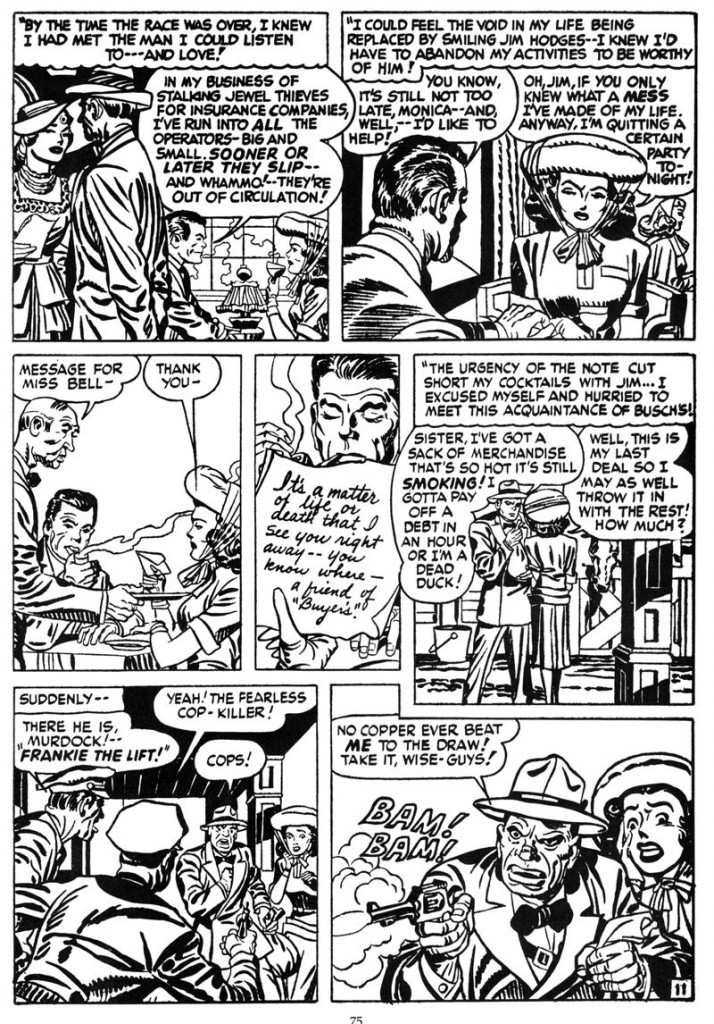
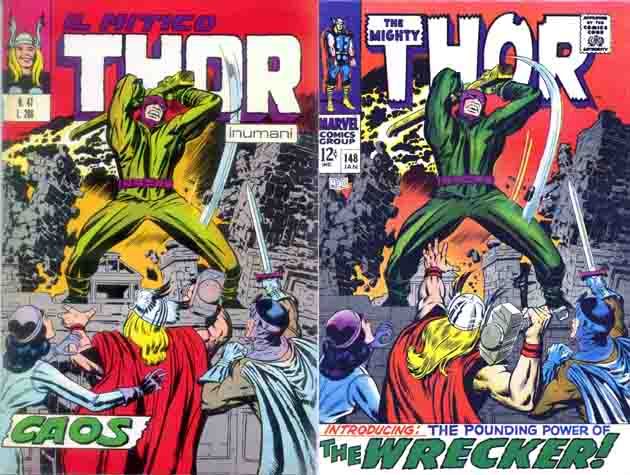
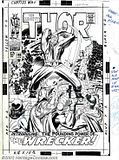
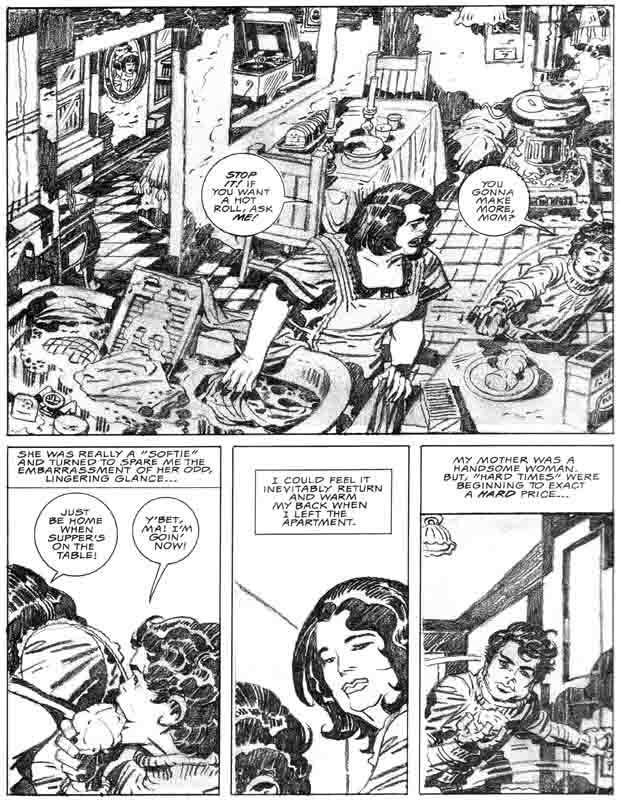
![The Demon #1 [1972]](http://kirbymuseum.org/blogs/kirby/wp-content/uploads/sites/8/2005/01/The-Demon-1-1972-692x1024.jpg)
![Our Fighting Forces #151 [1974]](http://kirbymuseum.org/blogs/kirby/wp-content/uploads/sites/8/2005/01/Our-Fighting-Forces-151-1974-682x1024.jpg)
![Rawhide Kid #141 [1977]](http://kirbymuseum.org/blogs/kirby/wp-content/uploads/sites/8/2005/01/Rawhide-Kid-141-1977-687x1024.jpg)

![Silver Star #1 [1983]](http://kirbymuseum.org/blogs/kirby/wp-content/uploads/sites/8/2005/01/Silver-Star-1-1983-688x1024.jpg)